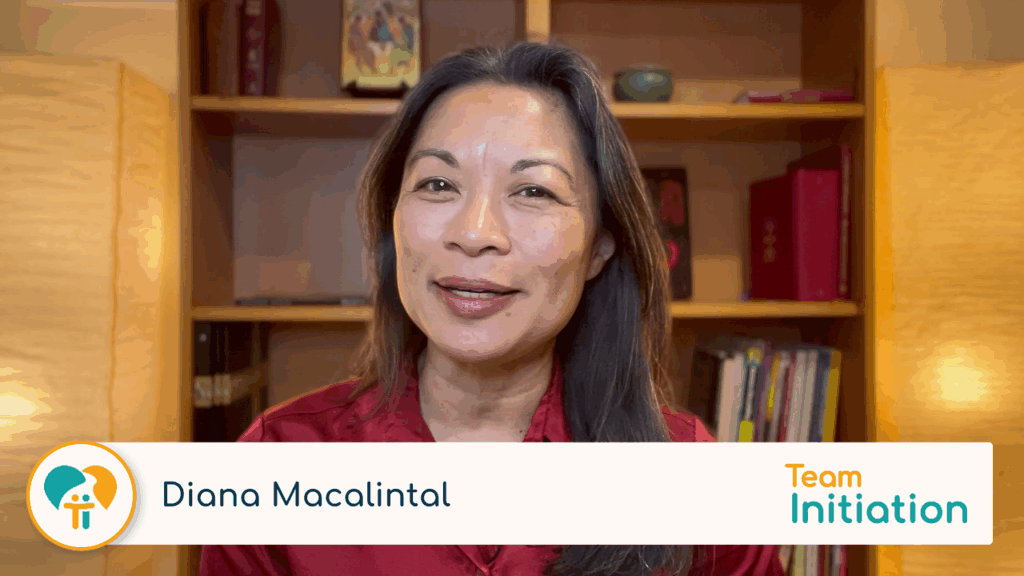
Embarking on a journey of faith and seeking a deeper relationship with Christ is a profound and life-changing experience. The Rite of Acceptance plays a vital role in this conversion process. When we celebrate this rite with inquirers, they are changed from outsiders to insiders as the community embraces them as their own.
But this conversion process doesn’t happen by magic. We have to do our part to celebrate the rite fully and faithfully to maximize the impact on the lives of the inquirers and the parish community.
Four key conversion moments
To celebrate the rite the way the church intends, we have to understand its flow, the primary symbols, and four key conversion moments.
- The Encounter with Christ and the Desire for Discipleship: The Rite of Acceptance is a kind of climax to the Period of Evangelization. As church, we are always evangelizing, so the first period never ends. However, when our evangelization efforts bear fruit, some people who have never known Jesus have a life-changing encounter and a desire to follow him. When we see real signs of initial conversion in the newly evangelized, we invite them to enter the journey of faith. The Rite of Acceptance signifies the beginning of their journey towards a deeper relationship with Christ and the church.
- Promises Made and Promises Receive: One of the most significant aspects of the Rite of Acceptance is the making of substantial promises by the catechumens. These promises signify their commitment to living as disciples and actively participating in the life of the church. Simultaneously, the community, represented by the sponsors and the entire faithful, pledges to support and nurture the catechumens in their faith journey. These mutual promises establish a bond between the catechumens and the People of God, reinforcing the sense of belonging and solidarity.
- Consecration and Recognition: During the Rite of Acceptance, the catechumens experience a profound consecration (see RCIA 41). This consecration is brought about by marking the inquirers’ bodies with the Cross. It is this ritual of placing the Cross upon them that the church formally recognizes and welcomes the inquirers as catechumens. In this moment, the catechumens become members of the Household of Christ (see Dogmatic Constitution on the Church, 14 and RCIA 47).
- Embracing a New Identity: Crossing the Threshold into God’s Family: As the catechumens stand on the threshold, poised between their former lives outside the church and their new life as disciples within the church, they follow the Cross from outside to inside to hear God’s word and to begin their new life in Christ. The Rite of Acceptance serves as the gateway to a formal and lifelong relationship with God and the People of God. In this pivotal moment, the catechumens step over the threshold, leaving behind the familiar and venturing into a realm where their roles as hearers of God’s word truly begin.
Entering an embrace
With every step taken, the catechumens symbolically enter into the embrace of Mother Church, who lovingly welcomes them into her fold. The Rite of Acceptance is a profound moment of conversion. Their conversion is not complete, of course, just as ours is not. But this is a definite marker of change from having no relationship with Christ and the church to a becoming coworkers in the vineyard with the People of God. No longer outsiders, the catechumens become an integral part of the gospel, forever connected to the body of believers.
By understanding the flow of the rite, recognizing its primary symbols, and appreciating the four key moments of conversion, we can actualize the initial conversion that happened during the Period of Evangelization and set the now-catechumens firmly on the journey of faith.
Can you help me out?
I’d love to know how this is landing. Can you share a word or a phrase about how this article resonates with you? Does it speak to your experience? Share your thoughts in the comments box below. Thanks for being part of the conversion!












The concept of ‘promises made’ resonated in particular with me. Our catechumens seem to have varying levels of commitment at the time of the Rite, although their commitment grows.
Thanks for sharing your insight, Nick. Do you do anything in particular to grow the commitment level of your catechumens?
It is an important aspect of their faith journey especially there are a few inquirers who will not make the sign of the Cross when we pray and they have shared on them not seeing the significance of it. So in preparing for the Rite of Acceptance we have informed them that it is THE church that is welcoming and accepting them into the church and the significance of the Cross being signed on them by the priest and godparents witnessed by the whole congregation so they become one of us – no longer outside but very much inside the church. They have come to better appreciate the significance of making the sign of the Cross when we pray. Thanks for the insights.
Joana
That’s a great story Joana! It’s great to hear about the impact that liturgy can have on people’s faith journey. Thanks so much for sharing.